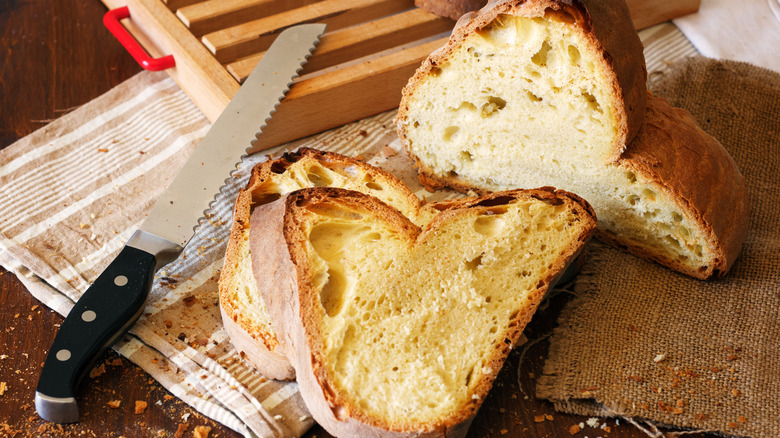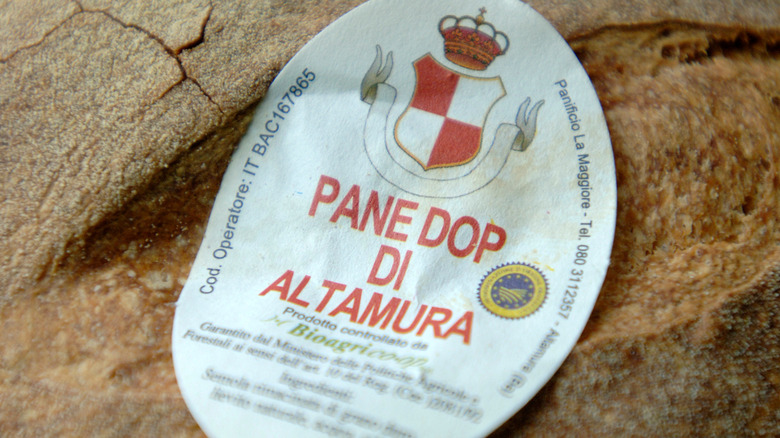This Protected Italian Bread Can Only Be Made With Ingredients From Puglia
Italy is known for its fantastic food, from pastas to pizzas and everything in between. Some food items are so revered that they are actually protected products. These products are designated DOP (Denominazione di Origine Protteta) or PDO (Protected Designation of Origin), and can include Parmigiano-Reggiano cheese (along with more than 30 other types of cheese in Italy), Prosciutto Di Parma and Prosciutto Di San Daniele, San Marzano canned tomatoes, and even the dried Cilento white fig, a fresh fruit you must try when in Italy. And since 2003, even certain breads have protected status, with the first being the Altamura bread from Puglia.
Altamura has had a long tradition of bread-making. The poet Horace, in ancient Roman times, referred to bread from Altamura as "the best bread in the world, so much so that the diligent traveler brings a supply for the continuation of the journey." Altamura bread must be made from durum wheat semolina (of at least 80% Appuro, Arcangelo, Duilio, and Simeto varieties), water from the region that also must meet strict requirements, yeast, salt, and water. It can be cooked in a wood-fired or gas oven, and must weigh at least 500 grams with a crust that is at least 3 millimeters thick.
Characteristics and how to enjoy Altamura bread
Altamura bread is known for having a crunchy crust and soft interior that's light yellow in color and soft and chewy in texture, with a slightly nutty and mild sour taste. It's great when enjoyed on its own with some olive oil (especially the several DOP olive oils from Puglia) or butter, topped with cheeses and meats, made into a bruschetta, used to dip in soups and stews, and to mop up Italian sauces, perhaps with Puglia's own spaghetti all'assassina dish or some of the other must-try foods from Puglia, and paired with an Apulian primitivo wine or Negroamaro Salice Salintino DOP wine.
The DOP designation doesn't cover the shape the Altamura bread must be in, but there are two standard shapes: one that looks like a priest's hat ("u cappiddde de prevete") and an overlapped bread that looks like a rustic knot ("u skuanète"). Due to its relatively high water content and thick crust, Altamura bread stays nice and moist for up to two weeks, which is why it was great for journeys even in ancient times.

